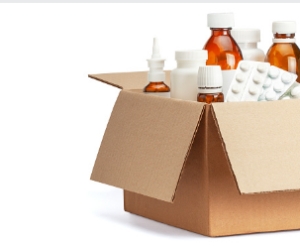Updated on August 21, 2023
Choosing the Right Material for Tablet Bottle Packaging
The tablet bottle packaging is a pharmaceutical container designed to securely hold tablets and capsules in various sizes and with various closure methods (caps or seals).
Pill bottles provide extended protection from moisture and contamination for medicines that must remain effective and stable over a prolonged period. It is essential when dealing with medications with longer shelf lives, like insulin.
Material
 Material selection for PharmapacNZ tablet bottle packaging is critical as it directly contacts pharmaceutical products. For optimal results, choose inert materials that won’t interact with salts and chemicals found within medication and durable structures that protect from light, oxygen and moisture exposure. Furthermore, the primary packaging of tablets or pills must also be childproof to avoid an unsafe reaction due to unauthorised opening or accidental misuse.
Material selection for PharmapacNZ tablet bottle packaging is critical as it directly contacts pharmaceutical products. For optimal results, choose inert materials that won’t interact with salts and chemicals found within medication and durable structures that protect from light, oxygen and moisture exposure. Furthermore, the primary packaging of tablets or pills must also be childproof to avoid an unsafe reaction due to unauthorised opening or accidental misuse.
Glass bottles are currently the most commonly used tablet bottle material, yet they are more costly and heavier than other materials. Glass is also less suitable for pressurised drug formulations as its fragile surface requires more care when handling, transporting or storing.
Plastic provides an affordable alternative to glass and can be produced in various colours to meet different labelling requirements. Clear plastic allows pharmacists and patients to confirm a drug’s identity, while opaque ones offer UV protection. Some popular plastics include high-density polyethylene (HDPE), polypropylene and polyethylene terephthalate; these materials have good barrier properties against oxygen, moisture and chemicals as well as are ideal for liquid formulation storage – they typically come packaged in small or large bottles but also come as rigid or flexible forms; other packaging formats include bags pouches or blister packs.
Appearance
Bottles are an increasingly popular packaging choice for pharmaceutical and nutritional products. Most are constructed of HDPE plastic – an FDA-grade plastic safe for human use – which comes in any shape or size to meet manufacturing requirements and provides protection from moisture, oxygen and contaminants. HDPE bottles are easy to use while remaining highly durable; additionally, they make for an ideal surface for labelling purposes.
PharmapacNZ tablet bottle packaging is one of the main reasons people purchase them, as their appearance makes it easy for pharmacists to verify the validity of prescriptions. Plus, there are plenty of sizes and colours to meet consumer demands!
However, while these bottles may offer great convenience when filling prescription drugs, if not handled appropriately, they can become dangerous. Bottles should always be thoroughly cleaned before reuse, with old medicines never flushed down the toilet or tossed into trash cans; old medications should always be returned to a pharmacy for proper disposal – many pharmacies even have recycling programs, and some charities collect used bottles for Malawi. Bottles can be cleaned using alcohol soap rubber erasers or even submerged in water before cleaning – or they can even be used to store LEDs switches microchips!
Durability
Material choice is key in tablet bottle packaging’s durability and compatibility with its contents. Plastic is often chosen due to its affordability, lightweight and shatterproof properties; however, it is permeable to gases and some liquids, which could compromise drug formulation inside; in addition, it may react with acids and solvents, which cause degradation and spoilage of its contents, causing degradation and spoilage requiring it to go through a charge test for maximum stability and compatibility with its drug in place.
Blister packs are sturdy, protecting products from light, air, and moisture exposure. As an alternative to bottles, they’re easily recyclable via curbside recycling programs; plus, they use less material than regular bottles – making this option more sustainable regarding the waste hierarchy.
Prescription bottles are versatile containers that serve many different functions beyond medicine. You can make a rattle or rhythm shaker by filling them with items that produce sound when shaken – such as beans, screws, coins or anything else that makes sounds. Use this device to add rhythm while playing music or have fun while laughing with friends! Additionally, these prescription bottles make great storage containers for beads and other craft materials.
Recyclability
Pharmaceutical drug bottles typically constructed of polyethylene or polypropylene are durable enough to safely store most medications, offering good resistance against mechanical damage, biological corrosion and moisture – not to mention being cost-effective! Unfortunately, they’re not recommended for oxygen-sensitive drugs stored in sealed containers.

